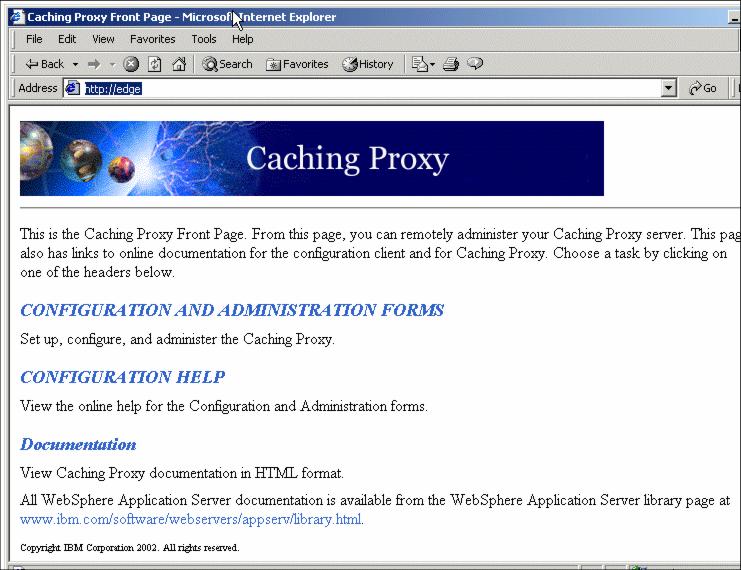Caching Proxy
Caching Proxy intercepts requests from the client, retrieves the requested information from the content-hosting machines, and delivers that information back to the client. You can configure Caching Proxy to handle such protocols as HTTP, FTP, and Gopher.The Caching Proxy stores cachable content in a local cache before delivering it to the requestor. Examples of cachable content include static Web pages and dynamic Web pages with infrequently changing fragments. Caching enables the Caching Proxy to satisfy subsequent requests for the same content by delivering it directly from local cache, which is much quicker than retrieving it again from the content host.
The Caching Proxy can be configured as Reverse, Forward and Transparent Proxy Server. The cache can be stored on physical storage devices or in memory.
Caching Proxy can be administered through a browser-based GUI or manually. You can change the settings by editing the file ibmproxy.conf located in...
<install_directory>/IBM/edge/cp/etc/en_US
An administrator user ID and password is needed to administer the Caching Proxy through a browser and for using the configuration wizard.
Use the following commands to add an administrator entry.
On UNIX:
# htadm -adduser /opt/ibm/edge/cp/server_root/protect/webadmin.passwd
When prompted, provide a user name, password and name for the administrator.
On Windows:
cd \Program Files\IBM\edge\cp\server_root\protect\htadm -adduser webadmin.passwd
When prompted, provide a user name, password and name for the administrator.
WebSphere is a trademark of the IBM Corporation in the United States, other countries, or both.
IBM is a trademark of the IBM Corporation in the United States, other countries, or both.
